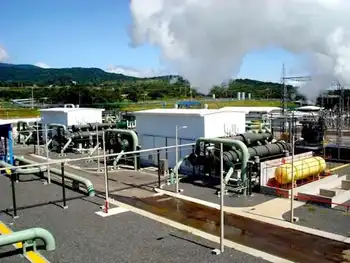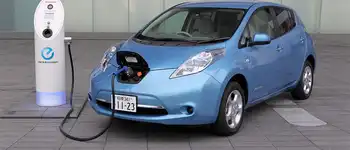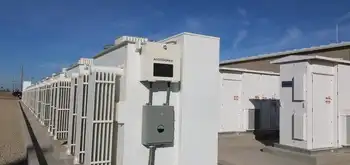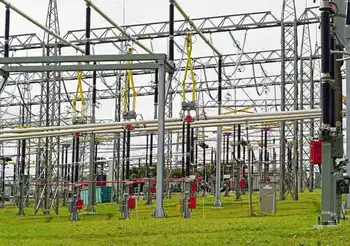Teacher builds own electric car
MADISONVILLE, OHIO - When David Abineri drives his 1991 Toyota Celica, he doesnÂ’t pay much attention to the price of gas.
He doesn’t use the words “gas pedal” anymore. And the car’s gas cap has been replaced by an electrical outlet.
Abineri, the head of the Seven Hills Upper SchoolÂ’s Science Department, built his own electric car over the past year and drove it to work for the first time.
As onlookers gathered, the 65-year-old Abineri eagerly shared the details of his journey from his Milford home - about 12 miles away.
On Sunday night, he plugged the car in to charge its 12 12-volt batteries that produce a total of 144 volts to the DC motor. He can now travel 30 to 35 miles on a single overnight charge. The goal is 50 miles.
En route to Madisonville, the car accelerated up to 50-55 miles per hour.
“It doesn’t have great acceleration or anything like that, but it gets you where you need to go for a commute like that, which is what so many people do,” Abineri said. “It’s designed primarily just to commute back and forth to school.”
The school was abuzz as his students and colleagues went for short rides in the finished product they had heard so much about or had seen as a work in progress.
Abineri was inspired to build the car when he saw the documentary, “Who Killed the Electric Car?”
The documentary recounted how General Motors built electric cars to meet CaliforniaÂ’s strict pollution restrictions. GM then sued, got those restrictions reversed and destroyed the cars. In the film, there were clips of people building their own electric cars.
“I said to myself, ‘Gee, you know it would be good to not only do it for myself, but do it for the kids and do it for the school, and help get the word out that it can be done with off-the-shelf parts and a little bit of know-how, but not much.”
It helped, though, that he likes to tinker with cars and has electrical engineering degrees. HeÂ’s taught for 40 years and is in his 27th year teaching physics and math at Seven Hills.
Abineri set out to find a small car with a ruined engine. That wasnÂ’t easy. After umpteen trips to Goodwill and police auctions, he finally found the Celica in Mariemont. He bought it on eBay for $400.
That was one of the least expensive parts of the project, which cost between $9,000-$10,000, all out of his own pocket.
Now, instead of an internal combustion engine, four deep cycle batteries sit under the hood, and eight are in the trunk. Together, they weigh 1,000 pounds and are expected to last three to four years.
Abineri found much help on the Web from those who had built electric cars, including a New Zealand man. He also learned to weld from film clips on the Web.
“You have to solve the problems as they come up for your particular situation, which is one thing I enjoy doing,” Abineri said.
Some physics students helped him over the summer, but he did the lionÂ’s share of the work.
Family and neighbors watched and waited – and waited.
“They were wondering about me, especially when it went on and on and on and never seemed to come to an end. There was some skepticism there,” he said.
“And, to be honest I didn’t always know it was going to be successful. Until you see all of the pieces in place, you don’t know where you’re going.”
He began test driving around his neighborhood this fall, a little farther each time from home. ItÂ’s an adjustment, for sure.
Instead of monitoring a gas gauge, he watches the voltage meter, which shows him how much capacity he has in the batteries. He also watches the ammeter, which measures the current coming from the batteries, telling him how fast heÂ’s consuming it.
“It’s an interesting metaphor, because I find myself looking at the gauges, and I’m seeing my capacity and how fast I’m using it, which you don’t normally see in a car, and it’s a metaphor for how we’ve got to look at the resources in our world today,” Abineri said.
“How much capacity do we have of our natural resources, and how fast are we using them up? Electric cars, one hopes, will help in that bigger picture, too.”
When he drives the car, he turns the key in the ignition, but there’s no grinding noise – or any noise at all. That’s the initial stage of starting the electric motor.
“The final stage of the electric motor is simply the accelerator pedal. I won’t call it the gas pedal anymore. That turns on a switch, which simply begins the motor turning, and the farther I push the pedal, the faster it turns the motor.”
As he approaches a stoplight, he lets the car coast and brakes to stop. While regular cars use up gasoline while idling, his saves energy by not using electricity while waiting for the light to turn green.
When he uses the heater, it immediately spews out hot air. “That’s one of the benefits I’ve found for wintertime. It’s kind of nice.”
He hasnÂ’t given up his other car, a Toyota Echo that gets 40 miles a gallon. But, he plans to use the electric car to commute to school.
“Part of the reason for this is simply to get the word out… I think the more this next generation experiences this, the more they’ll realize that this is an option for the future. To see it first hand and that it can be done makes a huge difference. At least, I hope it will make a difference.”
Related News

Ontario Sets Electricity Rates at Off-Peak Price until February 7
TORONTO - The Ontario government has announced that electricity prices are to be set at the off-peak price of 8.2 cents per kilowatt-hour, 24 hours per day for 21 days starting January 18, 2022, until the end of day February 7, 2022, for all Regulated Price Plan customers. The off-peak rate will apply automatically to residential, small businesses and farms who pay Time-of-Use or Tiered prices set by the Ontario Energy Board.
This rate relief is intended to support small businesses, as well as workers and families spending more time at home while the province is in Modified Step Two of the Roadmap…




